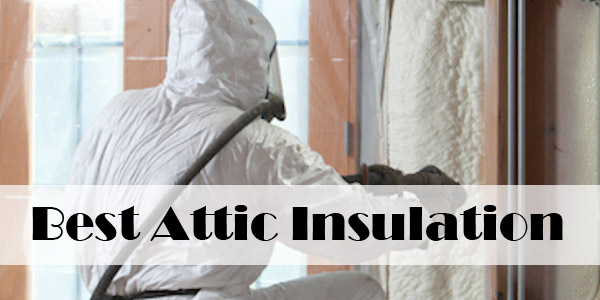
You feel a cold chill walking down the hallway and wonder, is it a ghost? Who am I going to call? Ghostbusters? Before you start looking for a phone number that doesn’t exist, maybe try checking the numbers on your utility bill first, a little higher than some of you neighbors are paying? Maybe that’s because their attic’s are properly insulated. Properly insulated attics can save you anywhere from 10-50% off your heating bill per month.
Before you choose insulation it is wise for you to understand what makes each insulation type different and what is their resistance to heat flow also known as the R value. Insulation with higher R-values is the best type of insulation for keeping your home cool in the summer and warm in the winter. If you are not sure what type of insulation is the best for your home you should contact an insulation installation expert near you or visit the North American Insulation Manufacturer’s Association Web site for additional information about insulation R-values. It is also good to know that insulation is cumulative meaning if your attic has R-19 insulation and more of the same insulation is added, you now have insulation with an R-value of 38.
Blown-in Insulation
Blown in insulation or loose fill insulation is made up of recycled small clumped material such as cellulose, fiberglass or mineral wood. Its installed by insulation experts that spray the insulation onto the surfaces of the attic or wall cavities. It’s also good to be aware that cellulose insulation can lose up to 20% of its R-value after settling so its always wise to install extra insulation if you are using the cellulose type.
Batt & Roll Insulation
Blanket insulation or otherwise known as roll and batt insulation is made up of several materials including plastic fibers, mineral wood or natural fibers like cotton. Lengths of this type of insulation can be cut to fit during insulation and comes in a variety of widths. This is simple insulation to install and can be done as a DIY project as long as you know your local fire and building codes and get permits before you start. Luckily, there are tons of insulation companies that can knock this job out for you and save you time, money and frustration from trying to get permits. This is usually a cheaper option than other types of insulation and provides nearly the same insulating capabilities.
Installation insulation with high R-values can help to create a barrier between your home and attic to prevent cold or heat from escaping which in turn makes your home more energy efficient. Although, adding insulation isn’t the only thing you should do to protect your attic. You might also need to seal up cracks, properly maintenance roof vents, windows and chimneys to make sure there are no wholes or cracks in them. These leaks can cost you money and other structural damage to you home.
These cracks and wholes can easily be sealed up with spray foam, caulking or weather stripping which all have their own advantages and disadvantages.
T To determine which will be best for you, search the U.S. Department of Energy Web site or talk to an professional at a insulation business. Whatever type of insulation you decide upon to install in your home’s attic, higher R-value insulation is going to cost you more but save you in the long run.
Thanks for finally talking about >Insulate Your Attic Better With Higher R-Value Insulation <Liked it!